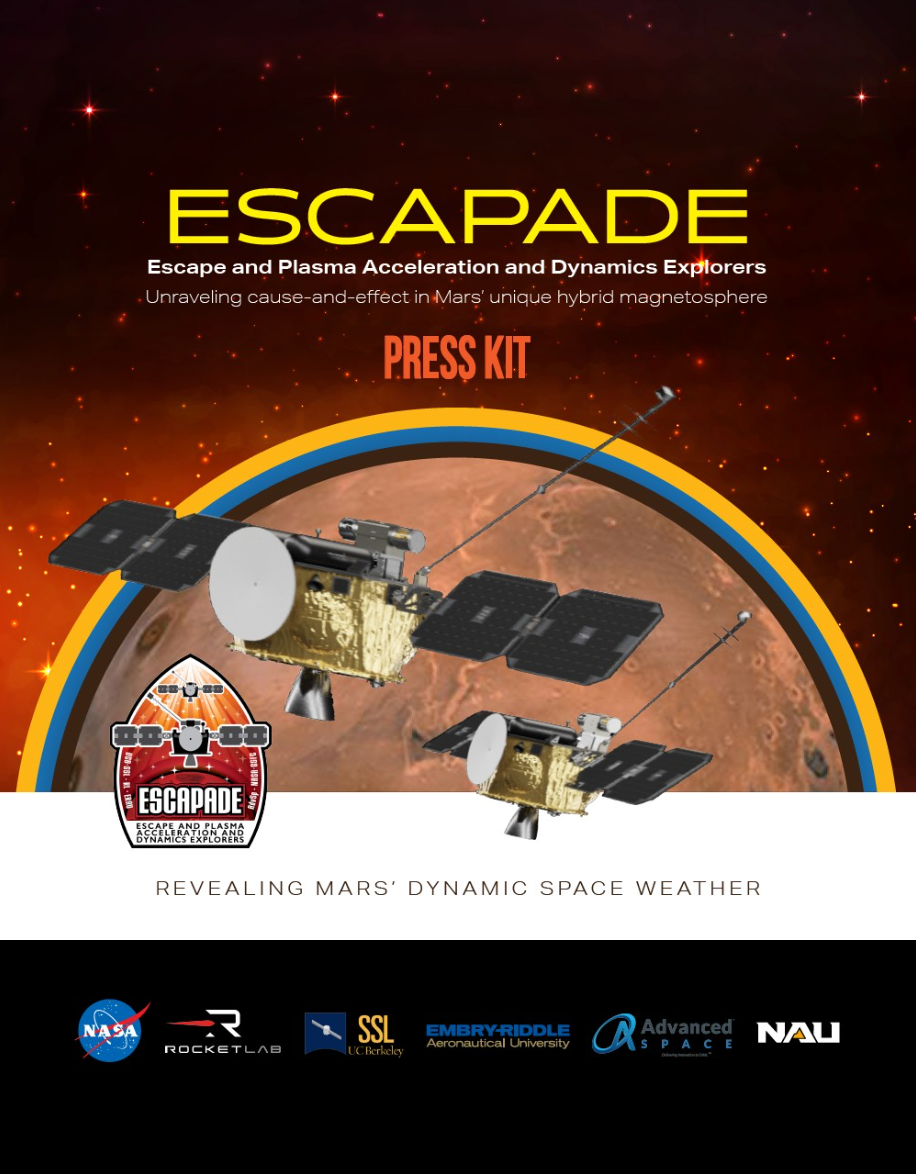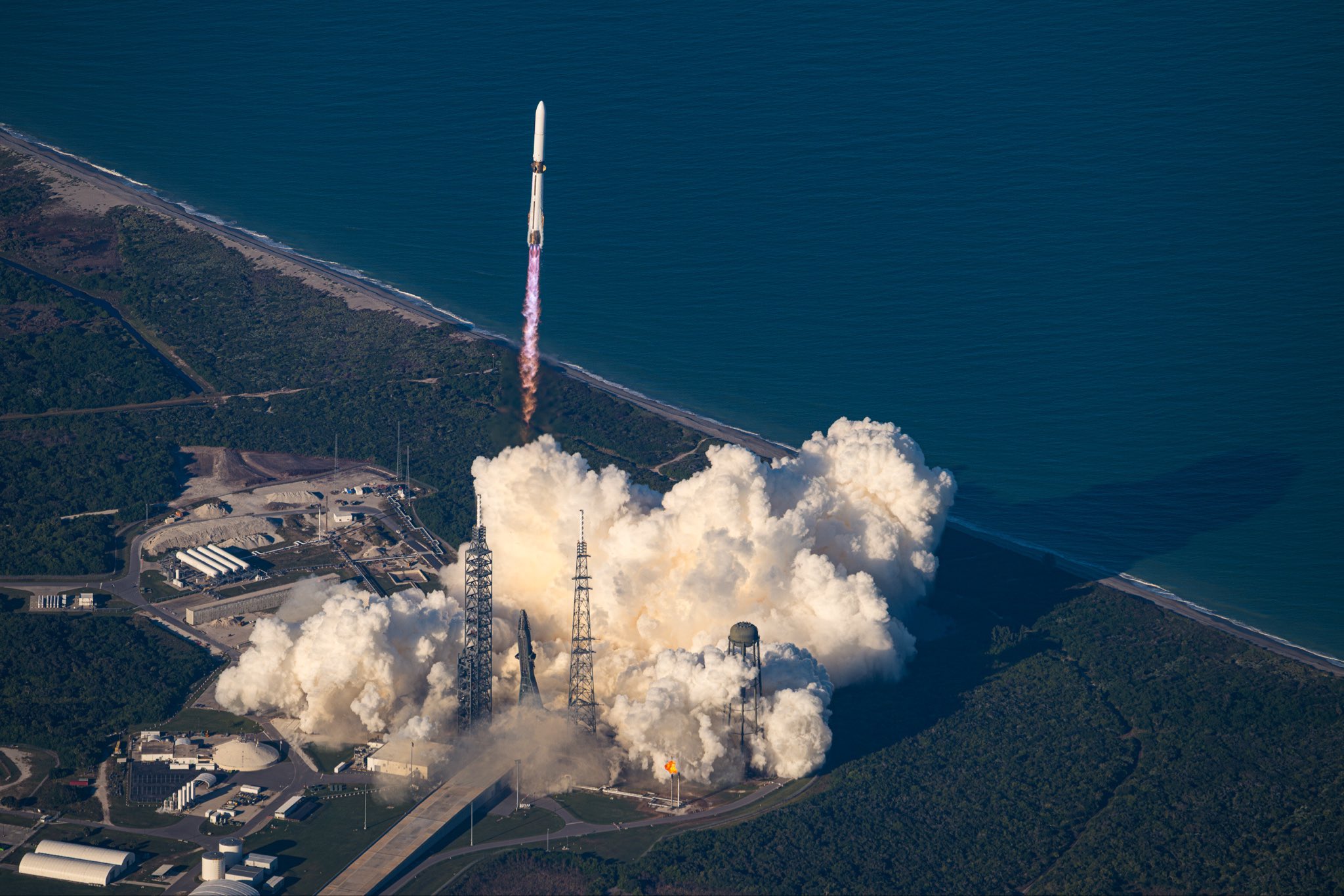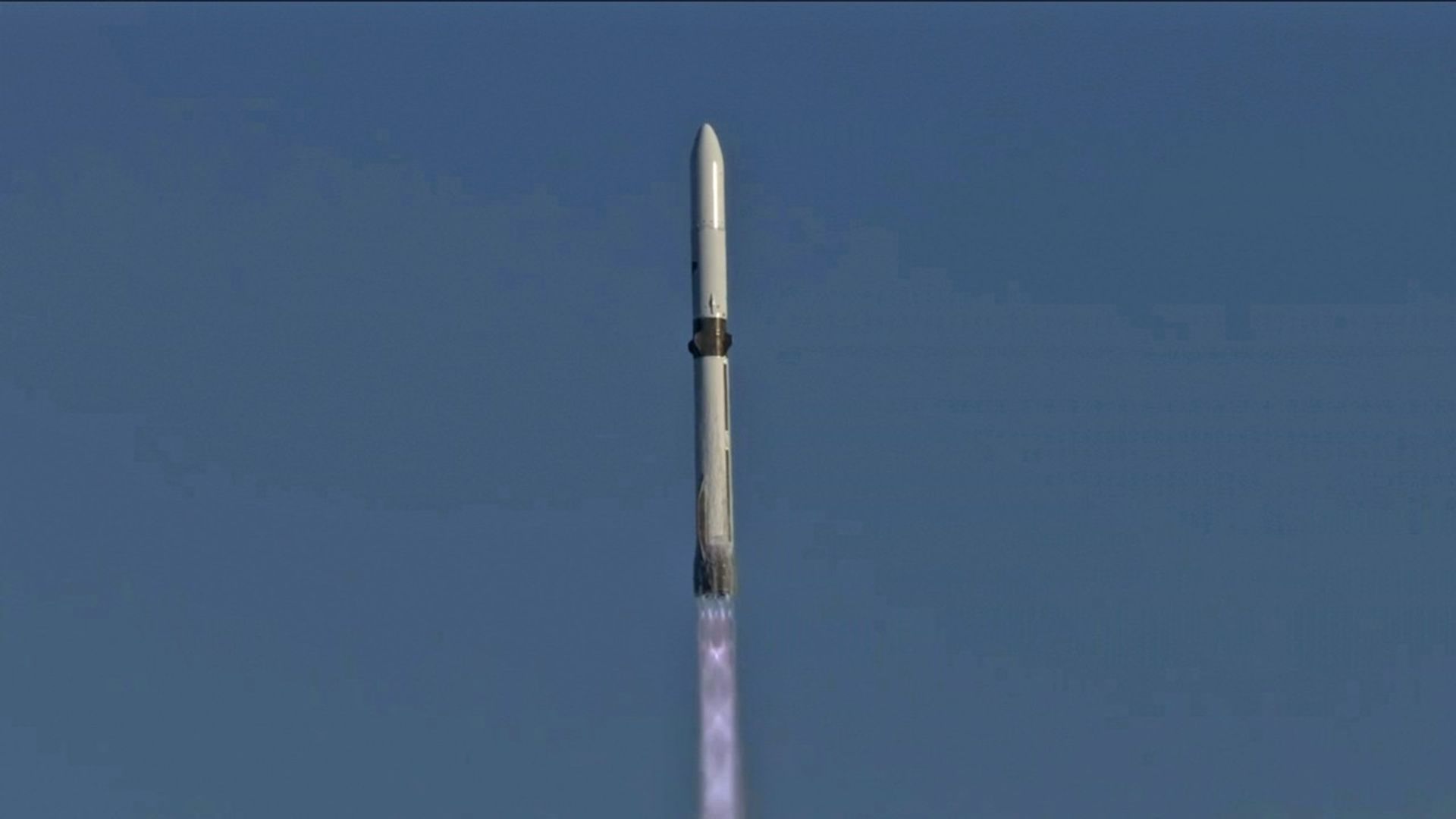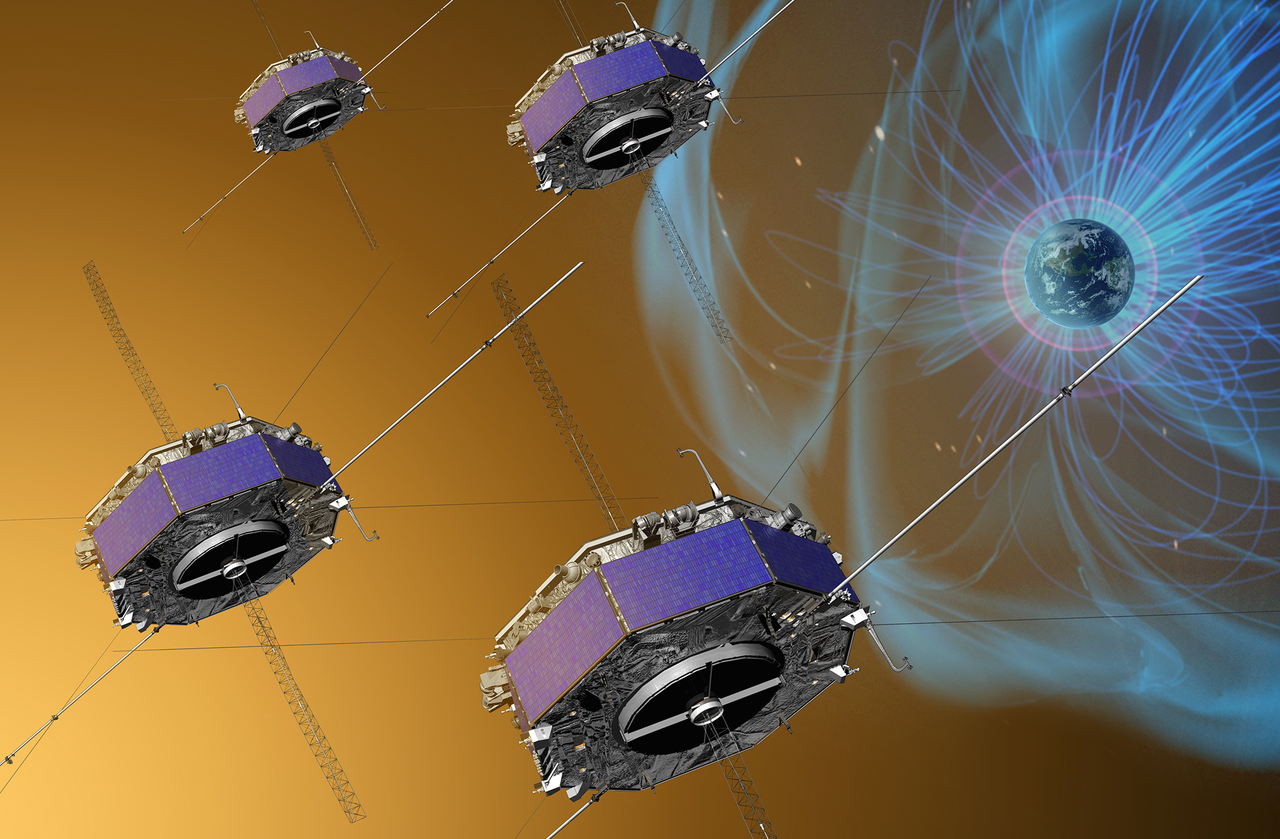ESCAPADE
Escape and Plasma Acceleration and Dynamics Explorers
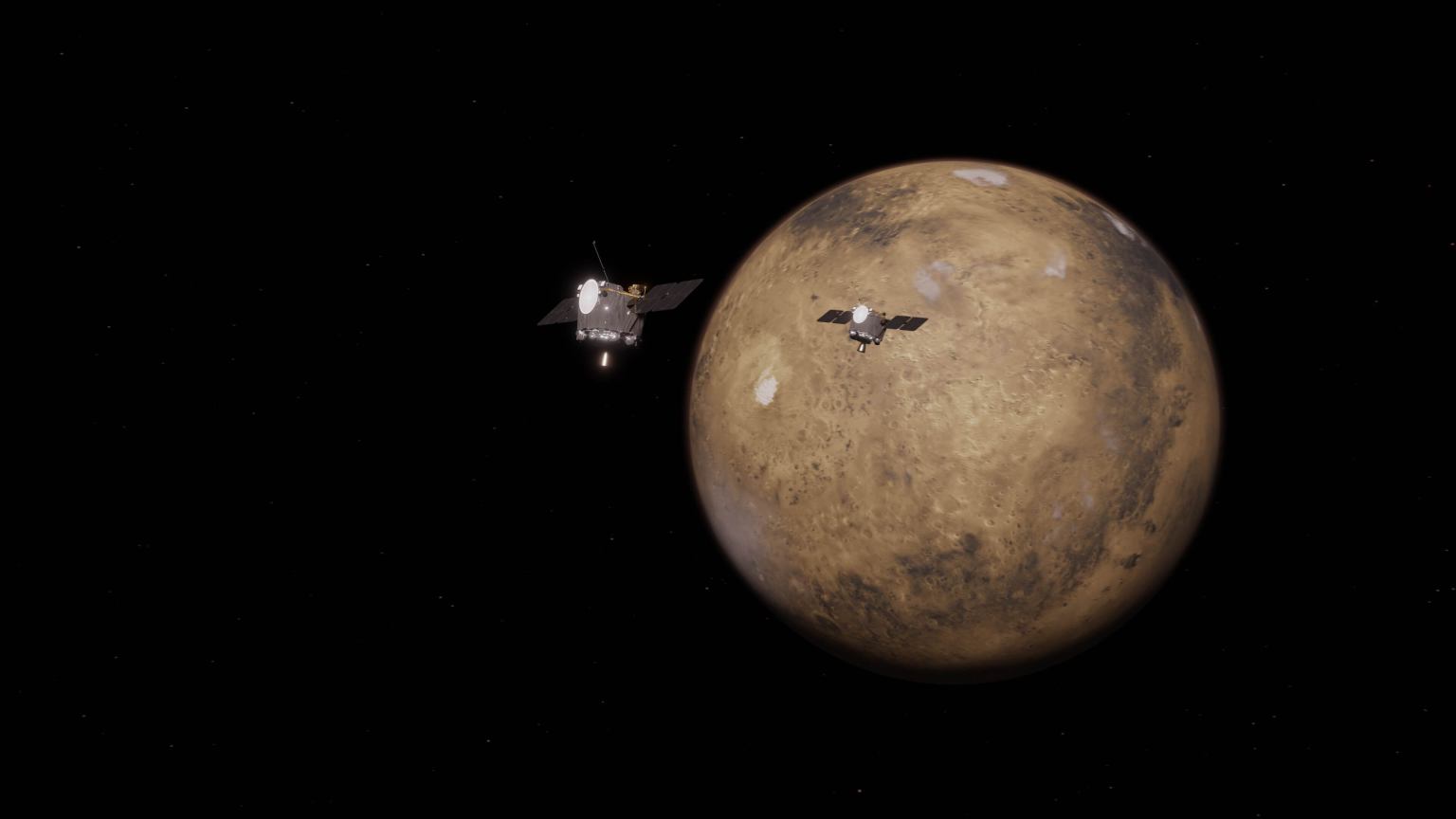
NASA's ESCAPADE Investigates Mars' Space Weather
NASA's Escape and Plasma Acceleration and Dynamics Explorers (ESCAPADE) mission will study Mars' real-time response to the solar wind, helping us better understand Mars' climate history.
Video credit: NASA's Goddard Space Flight Center
Overview
The ESCAPADE mission will send two identical satellites to orbit Mars and study how space weather affects the planet's unique "hybrid" magnetosphere, which plays a role in atmospheric loss. By collecting data on how solar wind interacts with Mars’ thin atmosphere and magnetized crust, the mission hopes to understand how Mars lost its once-thick atmosphere—an atmosphere that may have supported liquid water and possibly life.
Mars' magnetosphere is made up of leftover magnetic fields from an ancient core and a weaker magnetic field in its upper atmosphere. The solar wind, charged particles, and Mars' atmosphere constantly interact, contributing to the planet’s atmospheric loss. ESCAPADE's twin satellites will measure Mars' upper atmosphere and magnetosphere at altitudes between 100 and 6,200 miles (160 and 10,000 km), giving important insights into how Mars' space weather affects its atmosphere.
The ESCAPADE mission is managed by the Space Sciences Laboratory at the University of California, Berkeley, with key partners Rocket Lab, NASA's Goddard Space Flight Center, Embry-Riddle Aeronautical University, Advanced Space LLC, and Blue Origin.
Journey to Mars
Phase I – Launch & Loiter
ESCAPADE launched from Cape Canaveral, Florida, on Nov. 13, 2025. Because Earth and Mars weren’t aligned at that time for a direct trip, the spacecraft launched into a “loiter” orbit that loops around Earth’s Lagrange point 2 — about a million miles away, opposite the Sun. In the fall of 2026, when Earth and Mars align, the spacecraft will use Earth’s gravity to slingshot toward Mars.
Phase II – Interplanetary Cruise
On their way to Mars, the two spacecraft will use their onboard engines to make small course corrections, called trajectory correction maneuvers. These adjustments fine-tune their path and speed, ensuring both arrive at the right time and place.
Phase III – Mars Orbit Insertion
The spacecraft will reach Mars a few days apart and each will fire its engines for about 11 minutes to slow down and enter orbit around the planet. They’ll first settle into large "capture" orbits lasting about 60 hours each, then gradually adjust their paths to reach the smaller orbits needed for science observations.
Phase IV – Orbit Adjustment and Transition to Science
After arrival, the spacecraft will carefully shift into similar but slightly different orbits, keeping a safe distance from each other. This two-step process — orbit reduction and transition to science — must finish before late 2027, when communication with Earth will be interrupted during solar conjunction. By that time, one spacecraft will orbit Mars every 8.5 hours and the other every 9.5 hours. After conjunction, both will make final maneuvers so that by mid-2028 they are in nearly matching science orbits, ready to begin collecting data.
Phase V – Science
ESCAPADE’s science phase is divided into two campaigns. In the first, the spacecraft will fly in nearly the same orbit, one trailing the other like a “string of pearls.” In the second, they’ll move into different orbits to study separate regions of Mars’ magnetic environment at the same time.
"String of Pearls" Formation
In Campaign A, both spacecraft will have identical orbits, one following the other. The follow distance between the two spacecraft varies within 30 minutes, with the spacecraft shifting their positions on the string of pearls several times.
Complementary Orbits
Science Campaign B involves the spacecraft traversing different orbits, collecting observations from distinctly different magnetospheric regions simultaneously.
Science Goals and Objectives
Unravel Mars’ Hybrid Magnetosphere
Understand how Mars’ unusual mix of crustal and induced magnetic fields creates a complex “hybrid” magnetosphere unlike any other in the solar system.
Trace Atmospheric Loss and Climate Change
Investigate how the solar wind strips away Mars’ atmosphere over time, shaping the planet’s transition from a warmer, wetter past to the cold, thin-air world we see today. Science Campaign A will capture short-timescale changes in plasma and field conditions that drive this atmospheric escape, measuring the same location in space a few minutes apart.
Track Solar Wind–Mars Interactions in Real Time
Observe how bursts of solar activity and changes in the interplanetary magnetic field directly affect Mars’ magnetic environment and atmospheric loss. Science Campaign B will measure these effects simultaneously in different regions: one spacecraft can be “upstream” in the solar wind, while the other is “downstream” inside Mars’ magnetosphere.
Map Key Features of the Martian Space Environment
Characterize structures such as the bow shock, magnetosheath, magnetotail, crustal-field “mini” radiation belts, and ion escape plume to understand how energy and particles move through the Martian system.
Advance Comparative Planetology and Future Exploration
Use Mars as a natural laboratory to compare magnetospheres across planets and improve models of planetary habitability of far-off exoplanets that we can't yet directly measure. ESCAPADE's data will inform the design of future robotic and human missions to withstand Mars’ space-weather conditions.
Spacecraft and Mission Specs
| Nation | United States of America (USA) |
| Location | Mars |
| Spacecraft | ESCAPADE (two identical orbiters) |
| Spacecraft Mass | Dry: 209 kilograms (460 pounds) each Fueled: 535 kilograms (1,179 pounds) each |
| Launch Vehicle | Blue Origin New Glenn 2 |
| Launch Date and Time | Nov. 13, 2025, 3:55 p.m. EST |
| Launch Site | Launch Complex 36, Cape Canaveral Space Force Station |
| Mission Duration | Prime Science Mission: 11 months Total (including cruise phases): 3 years, 7 months |
| Scientific Instruments | Electrostatic Analyzer (UC Berkeley) Magnetometer (NASA Goddard) Langmuir Probe (Embry-Riddle Aeronautical University) |
| Student Instruments | Visible and Infrared Cameras (Northern Arizona University) |




























